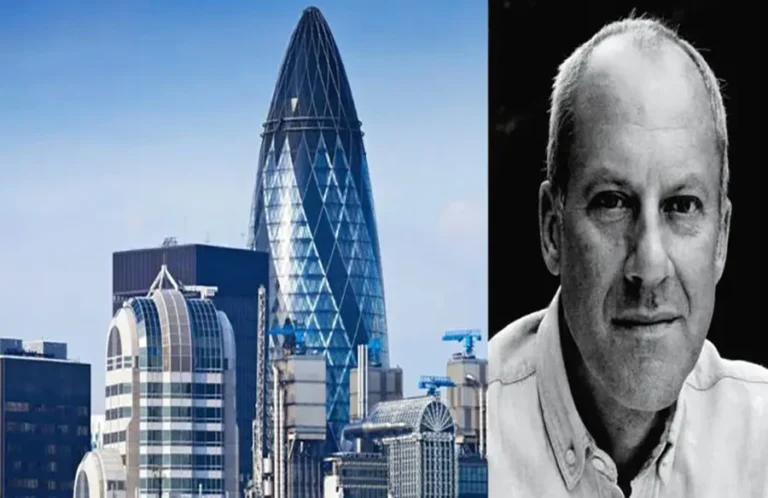Introduction: The Legacy of Norman Foster
Norman Foster, a titan of contemporary architecture, has redefined urban landscapes with his innovative designs and forward-thinking philosophy. Over six decades, his work has transcended traditional boundaries, blending cutting-edge technology, sustainability, and human-centric principles. From the soaring glass towers of London to the eco-conscious cities of the future, Foster’s creations are testaments to his belief that architecture must serve society while harmonizing with the environment. This article explores his life, iconic projects, design ethos, and enduring influence on global architecture.
1. Early Life and Influences: The Making of a Mastermind
Born in Manchester, England, in 1935, Norman Foster’s humble beginnings in a working-class family shaped his pragmatic yet aspirational approach to design. After studying architecture at the University of Manchester and Yale University, he co-founded Team 4 in 1963, a practice that laid the groundwork for his later innovations. Early mentors like Buckminster Fuller, renowned for geodesic domes, instilled in Foster a fascination with lightweight structures and efficiency. These formative years cultivated his signature style: a fusion of modernist clarity, technological precision, and environmental awareness.
2. Architectural Philosophy: Technology, Sustainability, and Humanism
Foster’s design philosophy revolves around the “High-Tech” movement, emphasizing transparency, flexibility, and integration with nature. He views buildings as living organisms that adapt to their users’ needs while minimizing ecological footprints. Key tenets include:
- Technological Innovation: Using advanced materials like steel, glass, and lightweight composites to create airy, energy-efficient spaces.
- Sustainability: Pioneering green architecture through solar panels, natural ventilation, and rainwater harvesting systems.
- Social Responsibility: Designing spaces that foster community interaction, such as open-plan offices and pedestrian-friendly urban hubs.
His belief that “architecture is the mirror of society” drives projects that address climate change, urbanization, and societal well-being.
3. Iconic Projects: Skyscrapers, Airports, and Cultural Landmarks
Foster’s portfolio spans over 100 countries, but several projects stand out as milestones:
- The Gherkin (30 St Mary Axe, London): A spiraling glass tower that redefined London’s skyline, combining aerodynamic efficiency with striking aesthetics.
- Reichstag Dome (Berlin): A symbolic glass dome atop Germany’s parliament, representing transparency and democracy.
- Apple Park (Cupertino): A futuristic, ring-shaped campus powered entirely by renewable energy.
- Hong Kong International Airport: One of the world’s busiest hubs, celebrated for its seamless functionality and expansive design.
Each project reflects Foster’s ability to balance grandeur with practicality, creating landmarks that inspire awe and serve their purpose flawlessly.
4. Sustainability as a Cornerstone: Pioneering Green Architecture
Long before “green building” became a buzzword, Foster embedded sustainability into his work. The Masdar City project in Abu Dhabi exemplifies this vision—a car-free, zero-carbon urban prototype powered by solar energy. Similarly, the Bloomberg European Headquarters in London achieved the highest BREEAM sustainability rating, featuring smart lighting and natural airflow systems. Foster argues that sustainability is not a constraint but an opportunity to innovate, stating, “The greenest building is the one that already exists,” advocating for adaptive reuse over demolition.
5. Legacy and Global Impact: Shaping Future Generations
Foster’s influence extends beyond buildings. As the founder of Foster + Partners, he leads a multidisciplinary team pushing the boundaries of urban planning, transportation, and space architecture (yes, he’s even designed a lunar habitat!). His accolades include the Pritzker Prize, the Stirling Prize, and a knighthood. Through teaching and mentorship, he inspires young architects to prioritize creativity, sustainability, and social equity. Cities worldwide now emulate his principles, proving that visionary architecture can drive meaningful change.
Conclusion: Norman Foster’s Enduring Vision
Norman Foster’s career is a masterclass in marrying form, function, and foresight. His buildings are more than structures—they are catalysts for progress, reflecting humanity’s aspirations and challenges. As cities grow denser and climate threats loom larger, Foster’s ethos of innovation and responsibility offers a blueprint for a sustainable, beautiful future. Whether through a shimmering skyscraper or a community-centric park, his work reminds us that architecture, at its best, elevates the human experience.
Frequently Asked Questions (FAQs)
Q1: What defines Norman Foster’s architectural style?
A: Foster’s “High-Tech” style emphasizes sleek, minimalist designs using advanced materials, energy efficiency, and a focus on natural light and open spaces.
Q2: How does Foster incorporate sustainability into his projects?
A: He integrates renewable energy systems, passive cooling/heating, recycled materials, and adaptive reuse of existing structures to reduce environmental impact.
Q3: Which Norman Foster building is the most famous?
A: The Gherkin in London and the Reichstag Dome in Berlin are among his most iconic works, symbolizing innovation and democratic ideals.
Q4: Has Norman Foster worked outside of architecture?
A: Yes! His firm has designed airports, bridges, and even concepts for lunar habitats, showcasing his versatility.
Q5: What is Foster + Partners’ approach to urban planning?
A: They prioritize walkability, public transport, green spaces, and mixed-use developments to create vibrant, sustainable cities.
This article captures Norman Foster’s transformative journey, illustrating why he remains a beacon of modern architecture.
